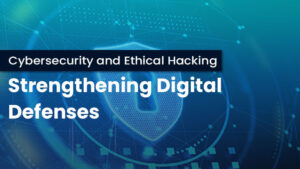
Cybersecurity and Ethical Hacking: Strengthening Digital Defenses
Cybersecurity and Ethical Hacking: Strengthening Digital Defenses Introduction With the rise of the digital age, cybersecurity threats are growing at an alarming pace, and protecting
Supercharge Your Cloud Computing, Cybersecurity, Networking, Microsoft and AI Skills with Our Premium Plan! BE A MEMBER NOW!

Cybersecurity and Ethical Hacking: Strengthening Digital Defenses Introduction With the rise of the digital age, cybersecurity threats are growing at an alarming pace, and protecting

The Rise of Artificial Intelligence in Everyday Life Introduction Artificial Intelligence (AI) has moved beyond being a futuristic concept and has become an integral part

Introduction In the fast-paced digital world, cloud computing services have become the backbone of modern IT infrastructure. The ability to access computing power, storage, and
Table of Contents
With the aid of the DevOps methodology, development and operations teams can collaborate more effectively to shorten the time it takes to develop new software, cut down on wasteful spending, and decrease deployment errors. This concept is now widely used in businesses, and a variety of DevOps tools and platforms have been developed. Three well-liked DevOps tools are available: Chef, Puppet, and Ansible.
Every organization faces the problem of Chef vs. Puppet vs. Ansible. As DevOps has expanded swiftly and become an integral element of every company function in the digital trend, this comparison is pertinent and pressing.
Many organizations are rapidly adopting the new collaborative culture to get a competitive advantage in modern IT. This article covers detailed knowledge of Ansible, Puppet and Chef and their differences.
Chef is a configuration management automation tool that provides a route to define Infrastructure as a Code (IaC). It is an open-source tool compatible with GitHub forks and GitHub stars.
Chef is one of the most significant tools in the cloud platform that benefits the entire organization’s infrastructure.
Six benefits of Chef are:
Puppet is a configuration management tool that aids in the automation of configuration management. It is in charge of managing the infrastructure on physical or virtual machines.
Puppet has plenty of benefits, and some of them are:
Ansible is a straightforward program that automates IT operations like application deployment, intra-service orchestration, configuration management, and provisioning.
Ansible has a lot of advantages. Some are straightforward to learn, with a primary Python language and no reliance on agents because Ansible Galaxy and Playbooks are written in YAML.
The three configuration tools are simple yet facilitate robust capabilities to automate complex multi-tier IT application environments.
In case of a primary master or server loss, the three configuration tools, Chef, Puppet, and Ansible, are highly available. Every tool includes a backup server or an alternate master to help if the primary server fails.
As previously said, one of the most noticeable distinctions is the configuration language used in IT automation applications. Its configuration language heavily influences a configuration management tool’s applications.
Because of its ‘agentless’ architecture, Ansible outperforms the other two tools, Chef and Puppet, in terms of simplicity of setup and installation. Chef and Puppet follow master-agent or master-slave architecture.
The tools’ language and configuration influence DevOps automation services’ management. There are two types of configurations: ‘pull’ and ‘push.’ Pull configuration entails transferring all configurations from a central server to agent nodes without using any commands. In a push configuration, all configurations on the server are pushed to the nodes along with particular commands.
YAML is regarded as the most accessible configuration language since it is akin to English and is human-readable. At the same time, the Puppet DSL and Ruby DSL languages cause management issues.
Ansible demonstrates its management dominance again since it supports the YAML language and follows both push and pull configurations.
The scalability of configuration tools is one of the essential criteria organizations evaluate when selecting a tool.
Chef, Puppet, and Ansible can manage big infrastructures while handling the burden of scaling settings. However, due to the complexity of their configuration languages, they differ slightly in terms of scalability.
Regarding interoperability, all three tools, Chef, Puppet, and Ansible, have similar features. In three cases, all the servers work on Linux or Unix machines, while slaves or nodes will work on Windows machines.
A review of the product capabilities in Chef Vs. Puppet Vs. Ansible can help in choosing the most suitable tool for your requirements. Each tool has its own set of better capabilities.
Pricing plays a prominent role in decision-making for adopting configuration management tools or, in general, any product or technology.
All three tools, including Chef, Puppet, and Ansible, have advantages and are superior in their own right. Each solution takes a somewhat different approach to automation and is best suited for specific user segments within the same target market.
The organization must examine various technical and business factors such as architecture, features, usability, and support to select the optimal configuration management tool.
© 2025 All rights reserved | Privacy Policy | Terms and Conditions | Sitemap | Cookie Policy




